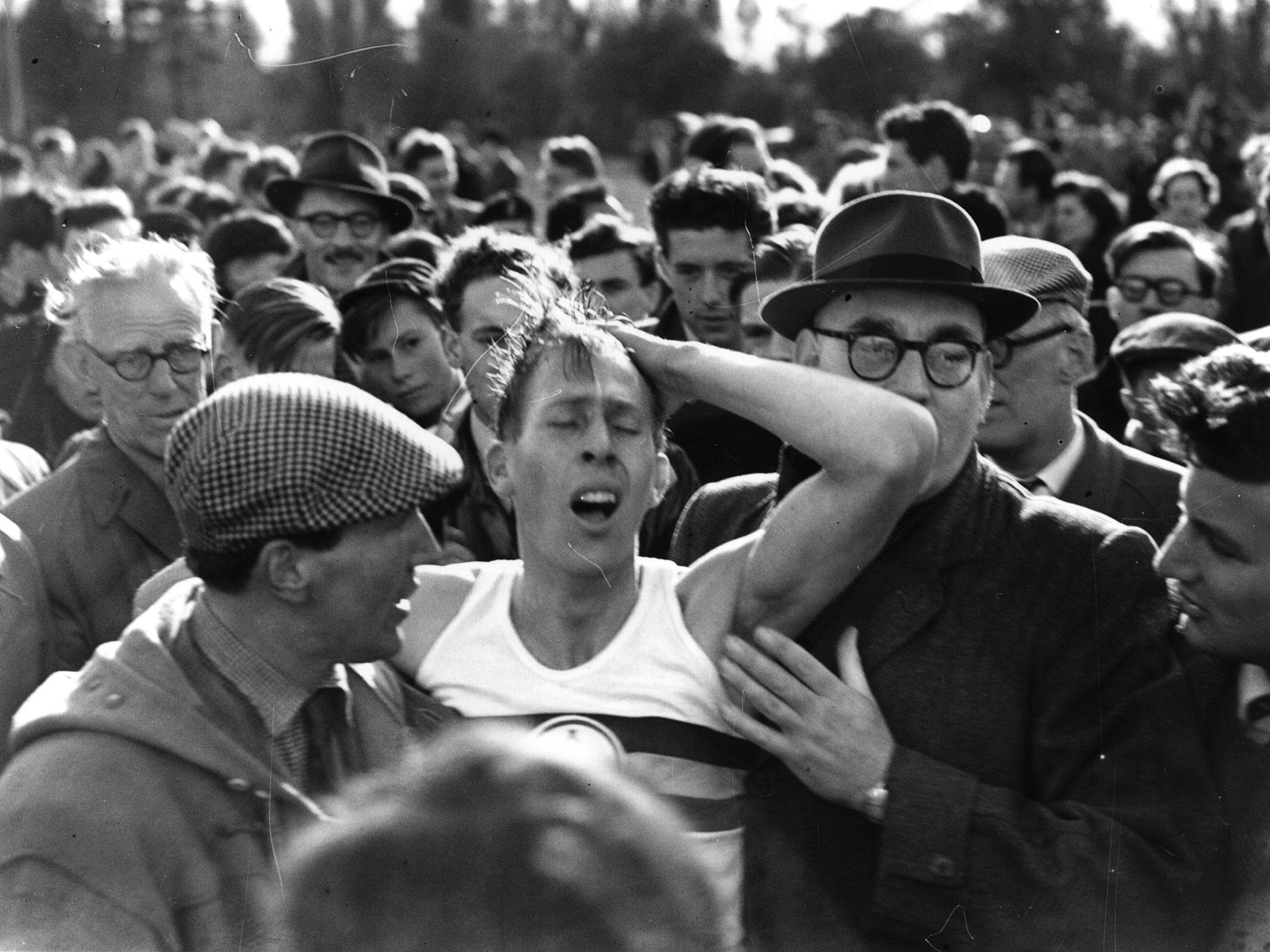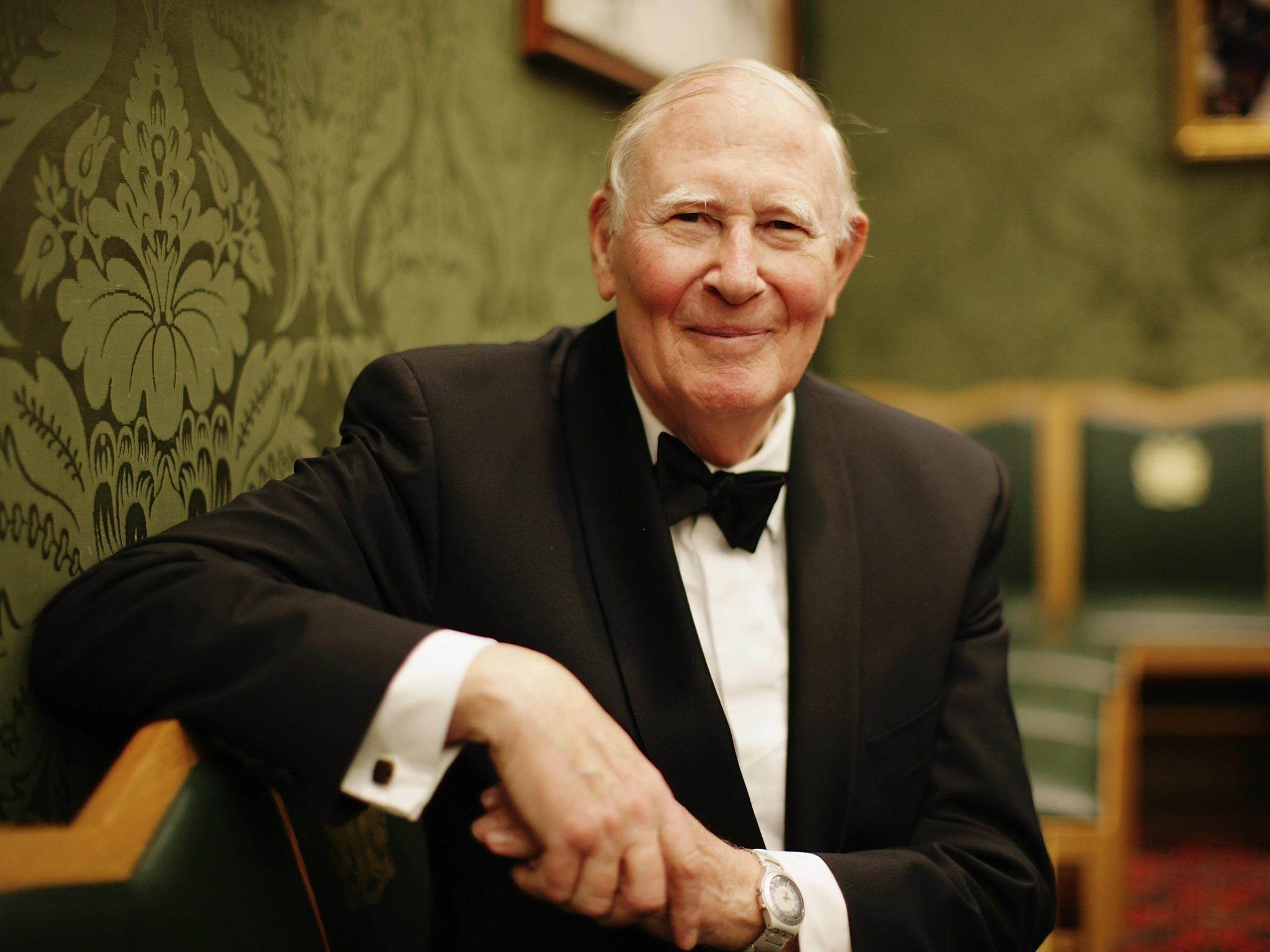Sir Roger Bannister: Middle-distance runner who achieved immortality with world's first four-minute mile
Forever lauded for his 1954 accomplishment on the track, Bannister was also a renowned neurologist who pioneered research on the nervous system

Your support helps us to tell the story
From reproductive rights to climate change to Big Tech, The Independent is on the ground when the story is developing. Whether it's investigating the financials of Elon Musk's pro-Trump PAC or producing our latest documentary, 'The A Word', which shines a light on the American women fighting for reproductive rights, we know how important it is to parse out the facts from the messaging.
At such a critical moment in US history, we need reporters on the ground. Your donation allows us to keep sending journalists to speak to both sides of the story.
The Independent is trusted by Americans across the entire political spectrum. And unlike many other quality news outlets, we choose not to lock Americans out of our reporting and analysis with paywalls. We believe quality journalism should be available to everyone, paid for by those who can afford it.
Your support makes all the difference.The great irony of Sir Roger Bannister’s long and extraordinarily accomplished life is that it was defined, in the public perception, by a feat lasting just three minutes, 59.4 seconds. Yet he spent decades working with huge distinction in other areas, and as a globally renowned neurologist he led groundbreaking research into failures of the autonomic nervous system.
His own parents were more than a little bemused by the acclaim heaped on him for breaking new ground on the athletics track. They were infinitely more proud of his record in the world of medicine, as indeed was Bannister himself.
Nevertheless, it is for running a mile in less than four minutes – on 6 May 1954 – that he will be forever enshrined in the pantheon of Great British achievement. And rightly so, for by the early 1950s the sub-four-minute mile was the shimmering holy grail of athletics, elusive but apparently attainable. Not many men had the speed and self-belief to capture the prize, but the handful who did all yearned to do first what had once been considered well beyond the limit of human capability.
Bannister broke the historic tape within a year of the union flag being planted at the summit of Everest (albeit by a New Zealander), two events that helped to lift the nation out of a lingering sense of post-war austerity.
But the achievement was something of a surprise, for the runner who by the spring of 1954 looked most likely to break the record was a formidably single-minded Australian, John Landy. (Later that summer, Landy would trim his rival’s time by more than a second.)
Unfortunately for him, it was too late for immortality. For on that momentous May afternoon, running for the Amateur Athletic Association against Oxford University at the university’s Iffley Road track, Bannister had taken full advantage of his first opportunity that year to attack the record. Passing his friends and pacemakers Chris Brasher and Chris Chataway, he accelerated down the final straight and, on bursting through the tape, was immediately engulfed by such physical pain that, as he later wrote, “I felt like an exploded flashlight with no will to live”.
In his memoir, The First Four Minutes, Bannister recalled that, in the wake of his achievement, “I felt suddenly and gloriously free of the burden of athletic ambition that I had been carrying for years”.
All the same, one fierce athletic ambition remained: to beat Landy. In August 1954, in the Empire Games in Vancouver, these titans of middle-distance running, the only two men on the planet to have run a mile in less than four minutes, lined up against one another. And both broke the barrier again, but, in what came to be known as ‘the Miracle Mile’, it was Bannister who finished first, thrillingly overtaking Landy on the final bend.
Later that month, after winning the so-called metric mile (the 1,500m) at the European Championships in Switzerland, Bannister retired from athletics to concentrate on medicine. He was 25. There was no Olympic medal in his remarkable tally of achievement (at the 1952 Games in Helsinki, he finished a disappointing fourth in the 1500m final), but nor was there any question that he might stay on to compete in Melbourne in 1956. As a young doctor – having qualified in that annus mirabilis of 1954 – Bannister hated the thought that athletics might somehow undermine his medical career. For years he turned down invitations to all kinds of gala occasions, so haunted was he by the image of one doctor saying “where’s Bannister?” and another rolling his eyes and replying: “He’s at the opera… again.”

Roger Bannister was born in Harrow, Middlesex, in 1929. His father was a civil servant who had grown up, the youngest of 11 children, in industrial Lancashire. His mother had worked in a cotton mill. But they had clambered up the social ladder and, as a consequence, fostered in their only son a ferocious will to succeed.
In 1946 he went up to Oxford to read medicine, and there joined the university athletics club, where he shone sufficiently to be considered for the 1948 Olympic Games in London. He did not quite make it, but this lanky medical student was plainly an athlete of enormous promise. It was his remarkable mental fortitude, no less than his long legs and lung power, that ensured the fulfilment of that promise.
In medicine, too, he found that extra yard. He wrote or edited several classic texts, notably Brain and Bannister’s Clinical Neurology, and cleverly deployed his knowledge of athletics to carry out pioneering research. It was Bannister who helped pave the way for the new profession of sports psychology by showing that endurance was powered by the brain, rather than muscle.
And he didn’t mind suffering for his science. During national service, in Aden in 1958, he realised that marching in extreme heat was not just an endurance test but a research opportunity. Two years later, back in London, he published the results of a series of experiments featuring one admirably willing human guinea pig, identifiable only by his initials. This man had sat naked for up to six hours in a hot chamber, after intravenous injections of increasing doses of bacterial pyrogens. The initials, inevitably, were RB.
Bannister was similarly industrious as the first chairman of the Sports Council between 1971 and 1974. He helped to introduce the test for steroids that would later undo the sprinter Ben Johnson, and energetically spearheaded the Sport For All campaign, arranging grants so that towns all over Britain could build multi-purpose sports centres. Aware that there were insufficient funds to go round, he had the bright idea of targeting every other local authority, in the hope that those overlooked, not wanting to be outdone by their neighbouring town, might find other ways of raising the money. The ploy worked: by the end of his tenure, Britain had more than 800 new sports centres.
As for Bannister’s own sporting life, he still enjoyed recreational running, but in 1975 that came to an enforced end when his right ankle was shattered in a road accident. A keen sailor, he stopped that too on realising that his ambition outstripped his ability. He had ended up, in his dinghy, in a shipping lane in the English Channel.
It came almost as a relief to hear that story, when I interviewed Bannister in 2004. By then he had also served as chairman of the International Council of Sport and Physical Exercise, and as master of Pembroke College, Oxford, and such were his numerous accomplishments that it was nice to hear him recalling a moment of haplessness.
Perhaps for the same reason, he enjoyed telling the tale. Nor did he discourage the apocryphal story that his wife, Moyra (the daughter of Swedish economist Per Jacobsson, who became head of the International Monetary Fund), was so clueless about athletics when they met that she thought his great achievement was running four miles in a minute. Adding substance to the myth, one of his 14 grandchildren really was heard to boast to a schoolfriend that his grandpa had once run a mile in four seconds.
His immortal achievement hardly needed exaggeration, of course, even though the subsequent decades have rendered it much less startling than it seemed at the time. Indeed, Bannister himself told me that he thought the mile record would go on being broken until it reached 3.30.
I also asked the great record-breaker whether there were still records he yearned to see broken. “Well, it is certainly becoming more difficult to find something that nobody else has ever done,” he said. “Some verge on the absurd, such as getting a number of people into a telephone box or a Mini, or eating the most jellied eels in two minutes. Then I see Ranulph Fiennes walking over both poles backwards and forwards, losing a couple of toes, running seven marathons in seven days. I suppose Jules Verne started it all with Around The World In Eighty Days. It’s amusing, and shows a basic aspect of human personality, the need to test ourselves. That’s why, evolutionally, the chimpanzees never stood a chance.”
Sir Roger Bannister, middle-distance athlete, neurologist and academic, born 23 March 1929, died 3 March 2018
Join our commenting forum
Join thought-provoking conversations, follow other Independent readers and see their replies
Comments